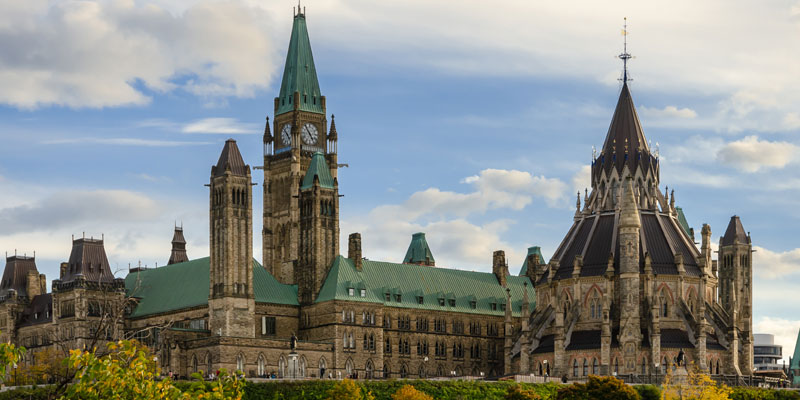Trudeau floats false rhetoric on ‘new’ taxes

Despite promising significant increases to already historically high spending, Prime Minister Trudeau recently pledged there will be no new taxes. This rhetoric is simply false. To pay for today’s spending, the Trudeau government must either tax today or defer tax increases to the future by borrowing (i.e. more debt). Put differently, Prime Minister Trudeau isn’t saying no new taxes; he’s saying we should continue to spend today and pay for it with taxes tomorrow.
According to the federal government’s recent fiscal “snapshot,” Ottawa will run a $343 billion budget deficit this year, which means it will spend $343 billion more than it collects in revenue—by far the largest amount in nominal terms in Canadian history. Due to new spending commitments, it’s likely the deficit will be even larger. Of course, annual deficits accumulate and increase government debt. Indeed, the federal government’s aggregate debt level will now eclipse $1 trillion.
And all indications suggest the accumulation of debt will not stop any time soon. According to recent announcements, the Trudeau government will spend $37 billion on extending the CERB and modifying employment insurance provisions, while billions in potential new spending for “green” infrastructure and universal pharmacare could be coming soon.
Again, Canadians ultimately bear the burden of this spending either through taxes today or debt-interest costs tomorrow. Even with historically low interest rates, interest costs will consume an estimated $19.5 billion this year. For perspective, that’s about what Ottawa spends on employment insurance in a typical year.
While the Trudeau government tried to temper the concerns of Canadians by stating it will lock in historically low interest rates to manage its debt costs, in reality, the government is basically saying it expects interest rates will increase over the next few years.
This should raise major concerns. As our colleagues point out, even a small increase in interest rates would significantly increase the cost of federal debt. Their analysis shows that if debt-interest costs returned to 2019/20 levels, current debt-interest costs would almost double, increasing from $19.5 billion to $36.2 billion. If interest costs were slightly higher—around 2010/11 levels—debt costs would increase to $54.5 billion, nearly triple the current cost.
Thanks to compounding interest, even a small increase in debt-interest costs could increase deficits for the foreseeable future. Indeed, larger deficits generally lead to higher interest costs, which lead to higher deficits, which mean higher interest costs, and so on. In fact, this cycle led to a near debt and currency crisis in the 1990s when federal debt-interest costs peaked at $49.4 billion (or 35.2 per cent of government revenues).
Put simply, this government is essentially preparing for more debt accumulation and higher interest costs, while counting on Canadians to foot the bill at some point in the future. Canadians shouldn’t be fooled—they will eventually pay for today’s spending through taxes. The only question is when.
Authors:
Subscribe to the Fraser Institute
Get the latest news from the Fraser Institute on the latest research studies, news and events.


